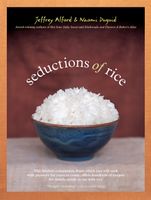Advertisement
Parboiled Rice
Appears in
By Jeffrey Alford and Naomi Duguid
Published 1998
For parboiled rice, paddy rice (rice still in its husk) is boiled, then cooled. This has the effect of driving nutrients from the bran into the center of the rice and at the same time pushing oils into the bran. Parboiled rice is easier to polish by hand than unboiled rice, and perhaps this is why the technique first developed. Mechanical polishers have a little more trouble with parboiled rice because the extra oil in the bran can clog up the machinery. Most parboiled rice is milled (which gives it much better storage qualities—no germ or bran to go rancid), but because of the parboiling process the rice retains much of the nutritional value of unmilled rice.



